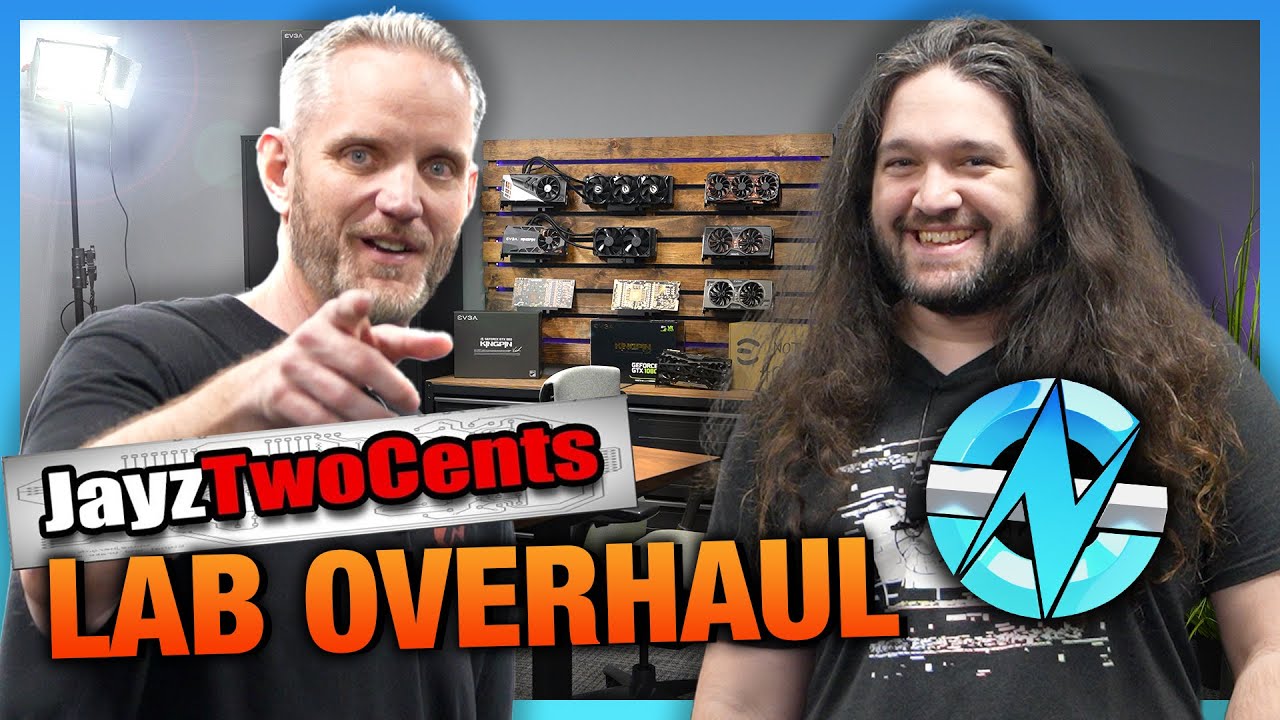In the video, Jay from JayzTwoCents and Steve from Gamers Nexus collaborate to enhance Jay’s GPU testing setup by incorporating essential metrics like 1% and 0.1% lows while ensuring clarity and consistency in benchmarking methodologies. They focus on optimizing the technical aspects of the testing environment and introduce tools like PresentMon to improve performance analysis, all while maintaining an engaging presentation style for viewers.
In the video, the hosts Jay from JayzTwoCents and Steve from Gamers Nexus come together to enhance Jay’s GPU testing setup. They reflect on their past collaborative overclocking battles and express their desire to find a middle ground in benchmarking methodologies. The goal is not to entirely replicate Gamers Nexus’s approach but to help Jay refine his processes to provide more meaningful analytical data without overwhelming him with complexity. Alongside them, Patrick assists in setting up the operating system and addressing various technical details.
The duo discusses the importance of incorporating 1% and 0.1% lows into Jay’s benchmarking, a practice that has been a focus for Gamers Nexus since around 2012. They aim to educate Jay’s team on how to effectively measure and report these metrics, which are crucial for understanding the performance consistency of GPUs. Throughout their discussions, they emphasize the need for clarity and consistency in testing, ensuring that the results are both representative and reliable.
As they work on the technical setup, Jay expresses his desire to maintain a balance between detailed analysis and engaging content, avoiding overly dry reviews. The team collaborates on optimizing the Windows environment for testing, discussing various settings like power plans, security features, and the significance of a clean installation for accurate benchmarking. They also delve into the nuances of monitoring tools and the impact of background applications on performance metrics.
The video highlights the practical aspects of the benchmarking process, including the setup of hardware and software tools. Steve introduces Jay to PresentMon, a monitoring tool that will help him capture and analyze frame times effectively. They discuss the differences between percentile measurements and the importance of understanding frame time data for accurate performance representation. The conversation also covers the significance of run consistency and how to approach power testing in a systematic way.
In conclusion, the video showcases the collaborative spirit between Jay and Steve as they work towards refining Jay’s GPU testing methodology. They emphasize the iterative nature of this process, advocating for a gradual approach to learning and implementing new techniques. The video serves not only as a guide for Jay’s team but also as an informative resource for viewers interested in improving their own benchmarking practices. With a solid foundation laid, both hosts express excitement for future developments in Jay’s testing process, particularly with upcoming GPU launches.
